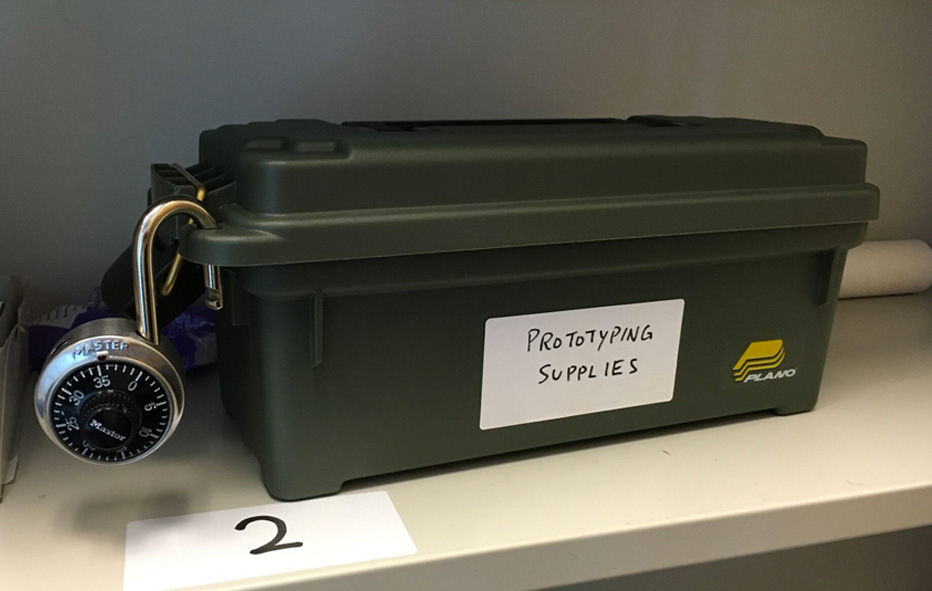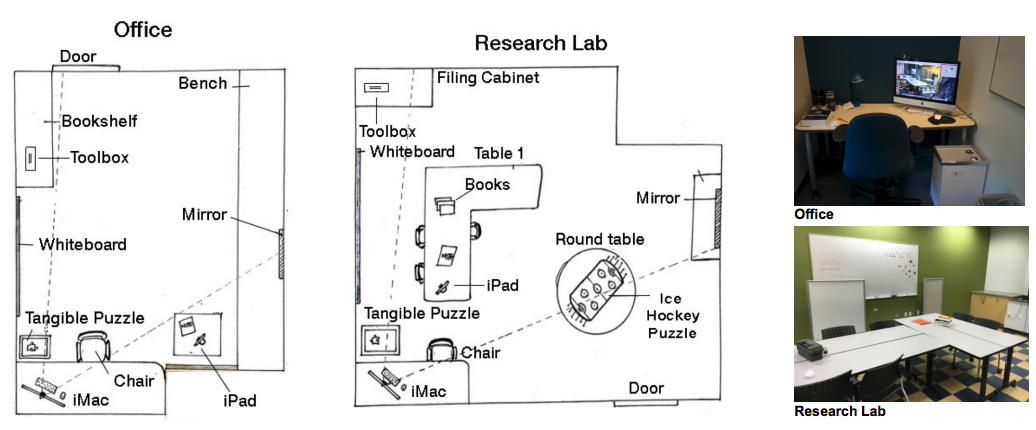Escaping Together: Distributed Escape Rooms

Description
Escaping Together is a distributed escape room that connects two distance-separated rooms with video and audio connections and includes a range of puzzles from those involving tightly-coupled work to those focused on loosely-coupled work, as well as both paper-based and digital puzzles. One partner is placed in each room and, as a team, the pair worked to escape their respective rooms.
Publication:
Hanieh Shekhari, Samarth Singhal, Rui Pan, Carman Neustaedter, Anthony Tang (2017) Escaping Together: The Design and Evaluation of a Distributed Real-Life Escape Room, Proceedings of the ACM Symposium on Computer-Human Interaction in Play held in Amsterdam
Hanieh Shekhari, Samarth Singhal, Rui Pan, Carman Neustaedter, Anthony Tang (2017) Escaping Together: The Design and Evaluation of a Distributed Real-Life Escape Room, Proceedings of the ACM Symposium on Computer-Human Interaction in Play held in Amsterdam
CHALLENGE
Real-life escape rooms involve collocated play. That is, groups of players must be in the same physical location together in order to participate. Yet, in reality, not all family and friends live in the same location and neither do all co-workers. This means that real-life escape rooms are not available as a form of entertainment or team building exercise for people who are separated by distance. Given the widespread set of technologies that family, friends, and co-workers can use to communicate over distance, we wondered how similar technologies might be used as part of a distributed escape room and what factors would be important for its design.Research Question:
RQ1: What design factors affected fun and enjoyment, feelings of team cohesion, and players sense of connection and immersion?
PROCESS
Design

We designed a distributed real-life escape room called Escaping Together to let partners play in interconnected escape rooms over distance. We designed our distributed escape room to fit an academic espionage theme where one room was a professor’s office and the second room was the research lab of the professor (Figure 1).

We designed a series of puzzles for each room that were connected in a sequential order.
1. Mirror Reflection: Spatial, Loosely-Coupled - The first puzzle was a spatial puzzle involving a mirror placed across the room from a whiteboard in both of the rooms. The mirror and whiteboard each had half of a combination lock code written on them (Figure 2).
2. Grade Sheet: Paper-Based, Loosely-Coupled- The second puzzle was paper-based and contained a grade sheet (discovered upon opening the box in the first puzzle) listing student grades across assignments. Players needed to recognize that the numbers were part of an Ottendorf cipher, e.g., a series of numbers pointing to words in a book based on the page number and line number.
3. Hockey Table: Spatial, Paper-Based, Tightly-Coupled - The third puzzle required tightly-coupled work and involved a table hockey board in the research lab as well as an information sheet in the office. The hockey table included numbered labels on different positions and hockey players, while the information sheet listed positions for each player. It also outlined instructions for playing “connect-the-dots” with players in order to find visual alphabet letter combinations (Figure 3).
4. Table Puzzle: Digital Tightly-Coupled - The fourth puzzle was a digital and physical jigsaw puzzle that partners had to complete together. Both participants were workers but each was required to help the other as they both had different pieces of the same puzzle (Figure 4).
OUTCOME
In our results, we explore the five main design factors that we feel most strongly affected the experience participants had in the distributed escape room.1.Expectations of Collaboration: First, we found that one of the most engaging aspects of the room's design was the extent of participants' knowledge of how much or how little collaboration was needed to solve the puzzles and how much they did indeed needed to work together.
2.The Reality of Collaboration: Once players altered their perception that all puzzles would involve closely knit teamwork, the degree to which the puzzles were actually interwoven across the two locations affected play considerably. That is, the reality of collaboration, rather than the perception of it, affected play.
3.The Sharing of Artifacts: The third factor that our analysis revealed to be critical to the participants’ experiences was the extent to which artifacts were shared across the rooms, including how a particular artifact was used in one or both of the rooms. This created different behaviors in terms of how people used the artifacts and collaborated with each other, and how difficult the puzzles became
4. Audio and Video Connections: A fourth factor that affected play was the inclusion of the video and audio connections themselves and the manner in which cameras were setup to be mobile or stationary objects and the audio link’s ability to be ubiquitous throughout most of the room. The video and audio links played important roles in creating varying levels of togetherness with one’s partner, support for both loosely coupled and tightly coupled work, and maintaining situational and workspace awareness of what was happening in each room.
5. Location Matters: The fifth factor that strongly affected play was the location of puzzle artifacts and technology in the room. The most significant manifestation of this was in the positioning of the audio source. In cases where audio was present on the stationary connection (the computer), players gravitated towards the desk area, and made use of the stationary camera more than the portable one.